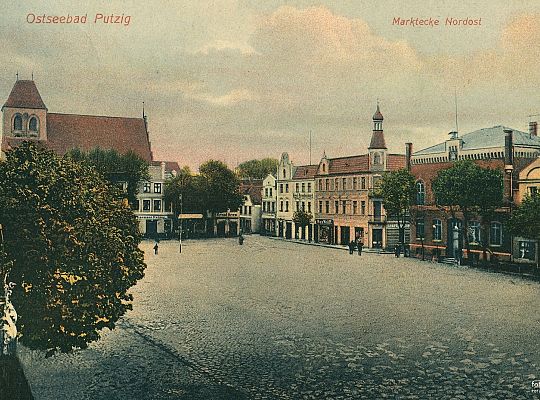Historical curiosities of Puck
The oldest Slavic port on the Baltic Sea, Puck is home to a fascinating underwater archaeological site in the curve of Bay of Puck, spanning over 12 hectares. This exceptional site hides remnants of port fortifications and wrecks of Slavic boats dating from the 6th to the 13th century. The excavated and preserved artefacts form a valuable part of the collection at the Museum of Puck Land.
The town of Puck was officially established through a charter signed on 16 November 1348. The initiative came from Heinrich von Dusemer, Grand Master of the Teutonic Order, who founded it on the site of the castellan’s settlement around the castle-town of Kashubian princes of Gdańsk.
Puck became the seat of the Teutonic Order’s Fisheries Office, the first administrative body of its kind in this part of Pomerania, in charge of the coastline’s maritime safety. The office oversaw lighthouse operations, rescue assistance for shipwrecked sailors and the management of salvaged property, as well as taxation on fishery activities.
During the Thirteen Years’ War, Puck aligned itself with the Kingdom of Poland. Between 1457 and 1460, it was held in pledge by the exiled Swedish king Charles VIII Knutsson. In 1466, the Starostwo of Puck was established.
On 24 February 1567, King Sigismund II Augustus designated Puck as a naval base, with Jan Kostka, the staroste of Puck, appointed commissioner of the Maritime Commission. In the 1620s, the local shipyard produced warships such as Żółty Lew (Yellow Lion), Król Dawid (King David), and Panna Wodna (Water Maiden).
At the turn of the 17th century, Puck served as a royal privateering port. The privateers operated under the Polish Crown, led by three generations of the Wejher family: Ernest, Jan and Jakub. They were tasked with enforcing customs duties and collecting tributes from foreign ships under the Polish flag, as well as engaging in raids on enemy vessels.
During the “Swedish Deluge” in 1655-1656, Puck remained unconquered. Its successful defence was led by Captain Szczęsny Niewiarowski and Father Grzegorz, a Franciscan monk. It was they who foiled the conspiracy. Their valiant actions, recorded in historical chronicles, later inspired theatrical productions in the 19th and 20th centuries.
In 1918, as Poland regained independence, Puck was the only Polish port town. At the Versailles Peace Conference, Antoni Abraham, known as the King of the Kashubians, represented the Pomeranian people, advocating for the region’s return to Poland.
On 10 February 1920, during the takeover of the garrison in Puck, General Józef Haller, commander of the Pomeranian front, symbolically marked the return of the Republic of Poland to the Baltic in a ceremony of Poland’s Wedding to the Sea, an event attended by state officials and military representatives.
Between 1920 and 1926, Puck served as the naval port of the Second Polish Republic and was home to the headquarters of the Polish Navy.
In the inter-war period, a Marine Air Squadron was stationed in the Puck area, which was based on the 1913 German aviation infrastructure.
From the 19th century onwards, Puck has been a renowned seaside resort, with steamship and railway connections considered cutting-edge transportation innovations of the 19th and 20th centuries.
In the interwar period, rowing and swimming competitions were held on the newly constructed pier. General Mariusz Zaruski, a promoter of maritime sports, served as Puck’s maritime staroste from 1927 to 1928. In the 1970s and 1980s, Puck’s expanded pier and modern marina became one of the most attractive water sports destinations on the Baltic coast, hosting international regattas organised by the Polish Sailing Association.
